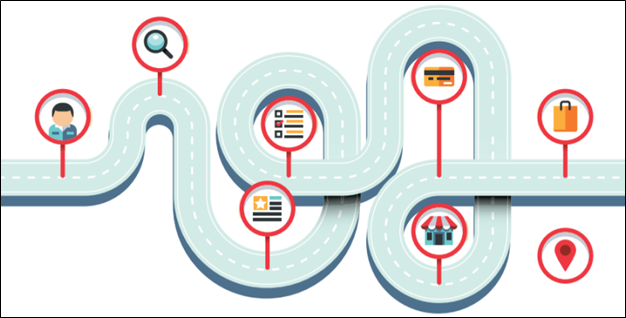Why Customer Journey Mapping is Important
Whether you are new to the game or an old sea dog navigating the rough waters of marketing, you probably heard about customer journey mapping and how it can help your company boost its revenue. Yet, you are still not sure why or how to use it.
First, let us take a step back and understand what a customer journey consists of. Think of it as a roadmap showing how your customer becomes aware of your brand and all the interactions and engagements that happen before (awareness and consideration stage), During (conversion stage), and after a purchase is completed (loyalty and advocacy stages).
By definition:
“The customer journey is the complete sum of experiences that customers go through when interacting with your company and brand. Instead of looking at just one part of a transaction or experience, the customer journey documents the full experience of being a customer.”
Now that we know the definition of a customer journey, why is it relevant? The answer is easy. A customer journey map is a visual representation of the buyer’s journey. It helps tell the story of your customer’s experiences with your brand across all touchpoints. Whether your customers interact with you via social media, email, live chat or other channels, mapping the customer journey visually helps ensure no customer slips through the cracks.
Some of the benefits are:
- Allowing you to optimize the customer onboarding process.
- Benchmarking the desired customer experience.
- Understanding the differences in buyer personas as they move from prospect to conversion through the funnel.
- Creating a logical order for your buyer journey.
This process has the power to help businesses step into their customer’s shoes and understand their needs and the clients’ perception of the brand. It allows marketers to gain insights into common pain points and what needs to be done to solve them.
From a strategic point of view, if you understand your customer’s needs, you can optimize your communication, personalize their shopping experience, and meet their expectations.
It is crucial to point out that this process is important regardless of your company size. Small and medium-sized companies should use this process as much as any large enterprise would. Customer expectations are changing and they don’t differentiate companies by size anymore. Experience is the name of the game.
That being said, customer journey mapping will help you develop a personalized experience by implementing an omnichannel approach to customer service, marketing, and sales. According to Salesforce, 84% of consumers feel that being treated like a human rather than a number is key to gaining their loyalty. Customer journey mapping allows businesses to create personalized experiences across all touchpoints and channels for every individual.
In conclusion, taking the time to map your customer journey is a great way to help a company better target its market, align sales and marketing to the same conversion plan, identify problematics areas within the funnel, and ultimately improve the customer experience. Putting all the pieces together will take time and effort, but it will pay off with a better and higher ROI down the road.
Remember, successful businesses put their customers in the centre of their culture.
Contact us to start customer journey mapping and see the difference in your ROI. As a Vancouver-based B2B PR agency, we understand the importance of delivering the right information at different stages of the journey.
By Pedro Kozlowski, Digital Generation Associate at Magnolia Communications – a full-service B2B demand generation marketing agency headquartered in Vancouver, BC. We focus on engaging, nurturing and converting leads with PR programs, paid social ads, email marketing, and marketing technology implementation.
Read More

Public Relations in the Payments Industry
Using Media and Your Spokespersons to Build Trust and Credibility “The problem is not a loss of money or credit,

Harness the Power of Paid Social Advertising for Your B2B Business (Updated for 2025)
Dive into the heart of innovation as we unfold the captivating narrative of Magnolia’s transformative journey. In this blog, we

How to Use Social Media for B2B Business Growth (Updated for 2025)
Dive into the heart of innovation as we unfold the captivating narrative of Magnolia’s transformative journey. In this blog, we
